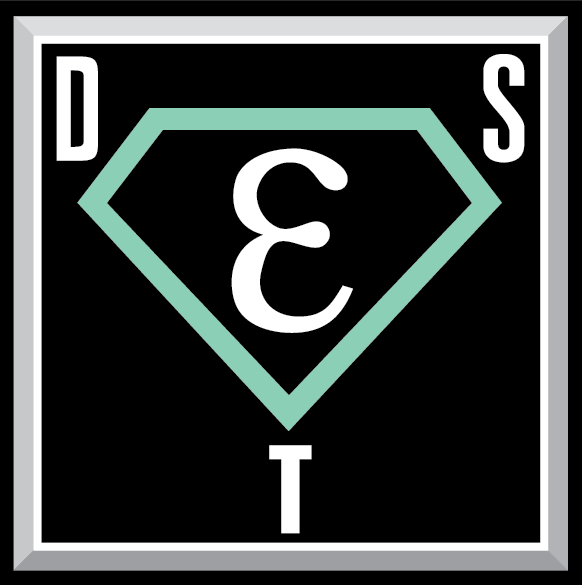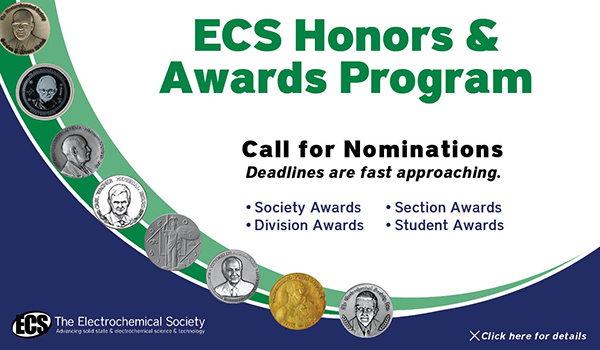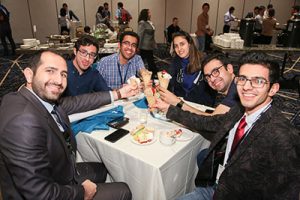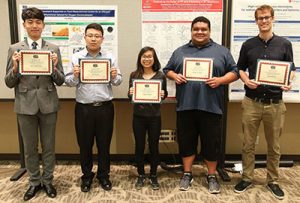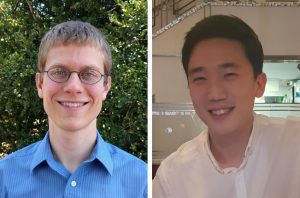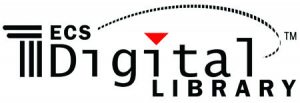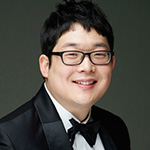
2018 Soo Kim, IE&EE Division H.H. Dow Memorial Student Achievement Award winner
The winner of the 2018 Industrial Electrochemistry and Electrochemical Engineering Division H.H. Dow Memorial Student Achievement Award is Soo Kim!
Each year, the ECS IE&EE Division recognizes and rewards promising young engineers and scientists in the field of electrochemical engineering and applied electrochemistry. The award was established in 1990 by a gift from the Dow Chemical Company Foundation and offers a framed certificate and a $1,000 prize. The nomination deadline is September 15 of each year.
Soo Kim received his PhD in materials science and engineering at Northwestern University in 2017 specializing in research and development of advanced battery materials. He received his BSE in chemical engineering at the University of Michigan in Ann Arbor in 2008 and MS in chemical engineering at Carnegie Mellon University in 2009.
Before pursuing a doctorate degree in computational materials research, he worked at Samsung to develop Li-ion battery cathodes at industrial-scale (2010-2011), and as a staff scientist at the Korea Institute of Science and Technology with Byung-Won Cho and Kyung Yoon Chung (2011-2013) to experimentally synthesize more advanced cathode materials.
Kim has co-authored over 30 patents and peer-reviewed journal papers, and has been a recipient of multiple awards including the ECS Edward G. Weston Summer Research Fellowship (2016), Northwestern Computational Research Day Poster Competition Award (2016), ECS Battery Division Travel Grant (2014), and Fifty for the Future Award from Illinois Technology Foundation (2013). Kim is currently a postdoctoral researcher at the Massachusetts Institute of Technology and is supervised by Yang Shao-Horn. He is concentrating on the synthesis in conjunction with performing density functional theory calculations to design functional materials for electrochemical energy conversion and storage applications.
Spring 2018 division awards were conferred at the 233rd ECS Meeting in Seattle, WA in May. It was there that Soo delivered his award lecture called “Understanding the Mn-Based Oxide Electrode Materials and Beyond from First Principles and Experiment.”
 The Electronics and Photonics Division award was established in 1969 to encourage excellence in electronics research and outstanding technical contribution to the field of electronics science. For the purpose of this award, electronics science is defined as the engineering and physics of electronic and photonic devices, materials, manufacturing, and applications thereof. The award consists of a framed certificate, a $1,500 prize and the choice between travel assistance and division life membership.
The Electronics and Photonics Division award was established in 1969 to encourage excellence in electronics research and outstanding technical contribution to the field of electronics science. For the purpose of this award, electronics science is defined as the engineering and physics of electronic and photonic devices, materials, manufacturing, and applications thereof. The award consists of a framed certificate, a $1,500 prize and the choice between travel assistance and division life membership.

